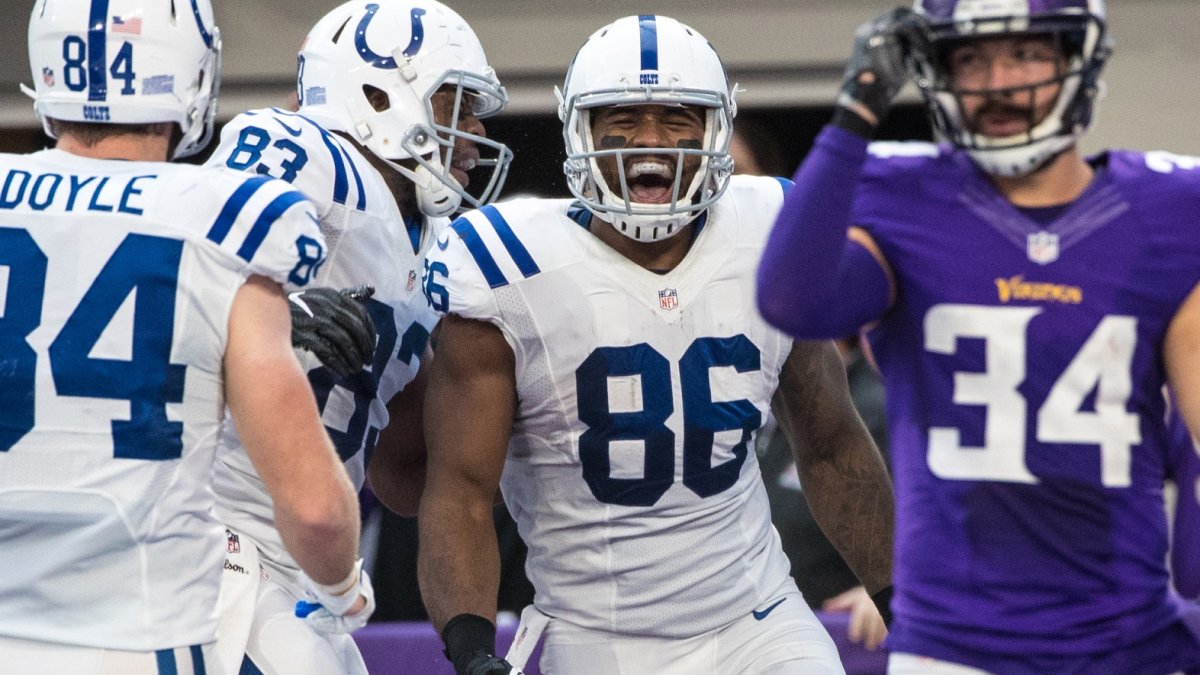Our season-long trade value chart is no long pertinent, so we’ve shifted gears and are now focused on dynasty trade strategies. We first looked at dynasty approaches to trading quarterbacks before moving on to running backs and wide receivers. This week’s column takes a look at trading tight ends in dynasty leagues.
We’ll overview some strategies you should keep in mind when a tight end is involved in a dynasty league trade.
I’ll also use some real-life examples from the PFF Fantasy dynasty league, which features both current and former staff members.
Dynasty tight ends: Talent is thin
The number of tight ends you can truly feel confident in year-in and year-out for dynasty leagues is small — infinitesimally so compared to the other positions.
It’s tough to find 12 good fantasy tight ends in a given year. It’s even harder to find 12 good fantasy tight ends who will produce for multiple years.
The point? Tight ends will rarely be the centerpiece of a dynasty trade. It’s far more likely they will be a supplemental player as part of a larger trade.
If a tight end is the centerpiece of a dynasty trade, they are probably an All Pro-caliber player in the real NFL. If they aren’t, then they shouldn’t be a centerpiece in a dynasty trade.
Volume is (almost) everything
If talent is thin at the position, and you don’t have a Rob Gronkowski or Travis Kelce on your team, then the next most important thing — by far — is volume.
My Narrative Street series from this offseason proved that the tight end position is mostly volume-driven.
If you’re trading for a tight end, make sure you’re trading for one who has access to a high-volume role or could gain access to a high-volume role within a relatively short period of time.
This is obviously what you want to do for every position in dynasty, but it’s arguably most important for tight ends. Why? Because the path to volume isn’t as easy to obtain at this position. A third-string running back can before a high-volume, league-winner within the span of just one season. Just take a look at Kenyan Drake this year.
The takeaway: Don’t waste your time trading for backup tight ends unless they are primed to be an equal replacement to their team’s current starter and their team’s current starter is a viable weekly TE1.
Some real-life trades
Here is a big trade that went down last summer involving a wide receiver in the PFF Fantasy Friends and Family League this year:
- Team 1 gives up Erik Swoope, Round 3 rookie pick
- Team 2 gives up 2017 and 2018 Round 3 rookie picks
This is the exact kind of trade I, personally, would not make. Swoope isn’t a primo talent (he went undrafted in 2014), and he’s a backup. He likely would, however, take over Jack Doyle’s role should something happen to Doyle. But there are better bets in the third round of rookie draft, in my opinion.
Here’s a big tight end trade from the 2016 offseason that I was a part of:
- Team 1 gives up Jay Ajayi, Cameron Jordan, Kwon Alexander, Round 1 rookie pick, Round 3 rookie pick
- Team 2 gives up Rob Gronkowski, James White, Benardrick McKinney, Round 7 rookie pick
I was the one who traded for Gronkowski in this scenario. Ajayi was coming off his rookie year, and the Round 1 rookie pick was toward the end of the round (10th overall). Gronkowski was coming off a healthy season, but his injury history is well-documented.
If you’ve made it this far, you probably know that I’m not a big advocate for trading for tight ends in dynasty leagues. But when you do swing for one, it should be a premium talent or a good talent in a great situation (i.e. an offense that routinely utilizes their tight ends, since volume is the most important thing here).



 © 2025 PFF - all rights reserved.
© 2025 PFF - all rights reserved.